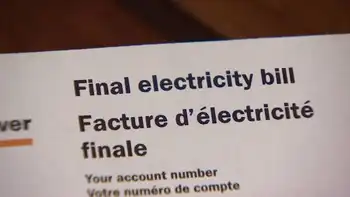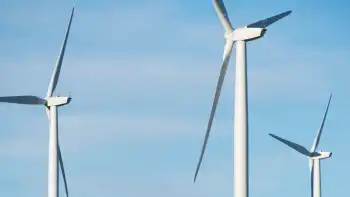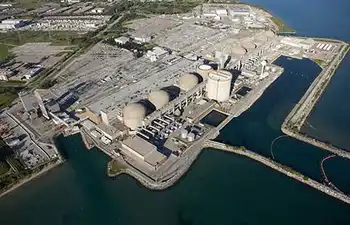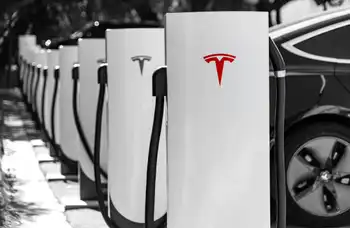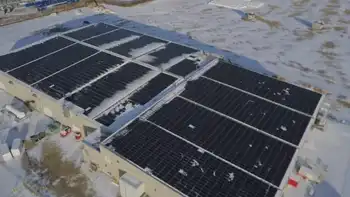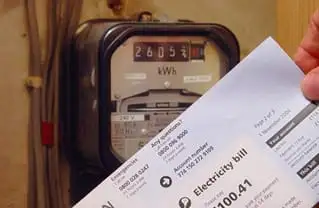Will the U.S. need to build another coal or nuke plant again?
By Scientific American
Electrical Testing & Commissioning of Power Systems
Our customized live online or in‑person group training can be delivered to your staff at your location.

- Live Online
- 12 hours Instructor-led
- Group Training Available
"We may not need any, ever," Jon Wellinghoff told reporters at a U.S. Energy Association forum.
The FERC chairman's comments go beyond those of other Obama administration officials, who have strongly endorsed greater efficiency and renewables deployment but also say nuclear and fossil energies will continue playing a major role.
Wellinghoff's view also goes beyond the consensus outlook in the electric power industry about future sources of electricity. The industry has assumed that more baseload generation would provide part of an increasing demand for power, along with a rapid deployment of renewable generation, smart grid technologies and demand reduction strategies.
Jay Apt, a professor at Carnegie Mellon University's Electricity Industry Center, expressed skepticism about the feasibility of relying so heavily on renewable energy. "I don't think we're where Chairman Wellinghoff would like us to be," Apt said. "You need firm power to fill in when the wind doesn't blow. There is just no getting around that."
Some combination of more gas- or coal-fired generation, or nuclear power, will be needed, he said. "Demand response can provide a significant buffering of the power fluctuations coming from wind. Interacting widely scattered wind farms cannot provide smooth power."
Wellinghoff said renewables like wind, solar and biomass will provide enough energy to meet baseload capacity and future energy demands. Nuclear and coal plants are too expensive, he added.
"I think baseload capacity is going to become an anachronism," he said. "Baseload capacity really used to only mean in an economic dispatch, which you dispatch first, what would be the cheapest thing to do. Well, ultimately wind's going to be the cheapest thing to do, so you'll dispatch that first."
He added, "People talk about, 'Oh, we need baseload.' It's like people saying we need more computing power, we need mainframes. We don't need mainframes, we have distributed computing."
The technology for renewable energies has come far enough to allow his vision to move forward, he said. For instance, there are systems now available for concentrated solar plants that can provide 15 hours of storage.
"What you have to do, is you have to be able to shape it," he added. "And if you can shape wind and you can effectively get capacity available for you for all your loads.
"So if you can shape your renewables, you don't need fossil fuel or nuclear plants to run all the time. And, in fact, most plants running all the time in your system are an impediment because they're very inflexible. You can't ramp up and ramp down a nuclear plant. And if you have instead the ability to ramp up and ramp down loads in ways that can shape the entire system, then the old concept of baseload becomes an anachronism."
Asked whether his ideas need detailed studies, given the complexity of the grid, Wellinghoff said the technology is already moving that way.
"I think it's being settled by the digital grid moving forward," he said. "We are going to have to go to a smart grid to get to this point I'm talking about. But if we don't go to that digital grid, we're not going to be able to move these renewables, anyway. So it's all going to be an integral part of operating that grid efficiently."
In response to Wellinghoff's comments, James Owens, a spokesman for the Edison Electric Institute, an association of shareholder-owned utilities, issued this statement: “While our industry is making very major strides in expanding energy efficiency and the use of renewables, we’ll still have to add new baseload generation capacity to help meet the growth in demand for electricity. As we intensify the transition to a low-carbon future, we will need to have all generation options on the table, including advanced new nuclear, advanced clean coal with carbon capture and storage, as well as natural gas.”
The North American Electric Reliability Corp. reported last week on challenges in integrating a twenty-fold expansion of renewable power into the nation's electricity networks but did not specifically address whether additional baseload generation would be needed. A spokesperson for NERC did not have an immediate response to Wellinghoff's comments.
Revis James, who directs energy technology assessment for the Electric Power Research Institute, said recently that it is not clear how fast renewable energy can be added without creating reliability issues. "No one knows what the magic number is," he said. "Are we moving too fast? On the policymakers' side, there's a lot that is not still understood about the implications of a large share of renewables."
Wellinghoff's statement – if it reflects Obama administration policy – would be a huge blow to the U.S. nuclear power industry, which has been hoping for a nuclear "renaissance" based on the capacity of nuclear reactors to generate power without greenhouse gas emissions.
Congress created significant financial incentives to encourage the construction of perhaps a half-dozen nuclear plants with innovative designs, and Energy Secretary Steven Chu has promised Congress to accelerate awards of federal loan guarantees for some of these proposals.
But a major expansion in U.S. nuclear energy would require a high effective tax on carbon emissions from coal plants, or an extended loan guarantee and tax incentive policy, according to the Congressional Research Service and outside consultants. The leading energy bills before Congress do not provide more loan guarantees.
"If expansion of nuclear plants is the nation's policy, then Congress has to recognize that the U.S. energy companies cannot afford to do this alone," said Paul Genoa, policy director for the Nuclear Energy Institute, in a recent interview.
"The president needs to show his cards on nuclear energy," said energy consultant Joseph Stanislaw, a Duke University professor. "He cannot keep this industry, which must make investments with a 50-year or longer horizon, in limbo for much longer."
"I think (new nuclear expansion) is kind of a theoretical question, because I don't see anybody building these things, I don't see anybody having one under construction," Wellington said.
Building nuclear plants is cost-prohibitive, he said, adding that the last price he saw was more than $7,000 a kilowatt – more expensive than solar energy. "Until costs get to some reasonable cost, I don't think anybody's going to (talk) that seriously," he said. "Coal plants are sort of in the same boat, they're not quite as expensive."
There's enough renewable energy to meet energy demand, Wellinghoff said. "There's 500 to 700 gigawatts of developable wind throughout the Midwest, all the way to Texas. There's probably another 200 to 300 gigawatts in Montana and Wyoming that can go West."
He also cited tremendous solar power in the Southwest and hydrokinetic and biomass energy, and said the United States can reduce energy usage by 50 percent. "You combine all those things together... I think we have great resources in this country, and we just need to start using them," he said.
Problems with unsteady power generation from wind will be overcome, he said.
"That's exactly what all the load response will do, the load response will provide that leveling ability, number one," he said. "Number two, if you have wide interconnections across the entire interconnect, you're going to have a lot of diversity with that wind. Not all the wind is going to stop at once. You'll have some of it stop, some of it start, and all of that diversity is going to help you, as well."
But planning for modifying the grid to integrate renewables must take place in the next three to five years, he said.
"If we don't do that, then we miss the boat, "Wellinghoff said. "That planning has to take place so you don't strand a lot of assets, a lot of supply assets."
Unlike coal and nuclear, natural gas will continue to play a role in generating electricity, he said.
"Natural gas is going to be there for a while, because it's going to be there to get us through this transition that's going to take 30 or more years."
Chu reiterated before the House Energy and Commerce Committee that he supports loan guarantees for new nuclear power plants and is working with the White House on the issue.
"I believe nuclear power has to be part of the energy mix in this century," Chu said.
Chu also noted today that nuclear technology, along with renewables, is an area where the United States has lost its lead. "We are trying to start the American nuclear industry again," he said.
Coal currently provides half of U.S. power, while nuclear energy accounts for about 20 percent.





